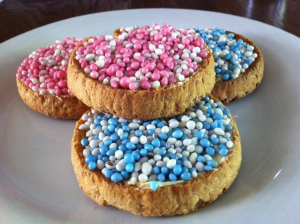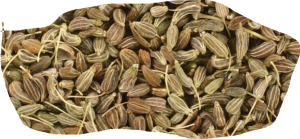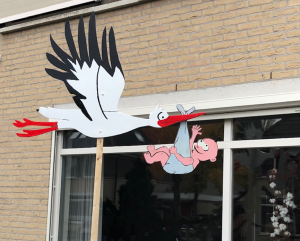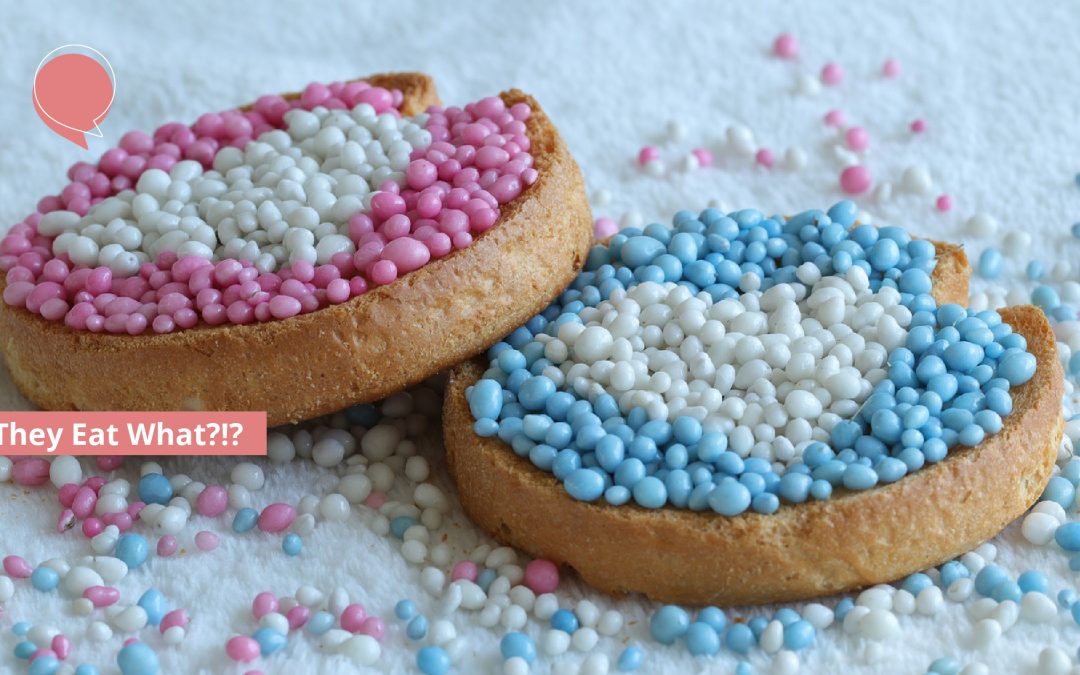June 2023 | Written by – Willem Van Hoorn
In a previous blog post, we discussed the concept of ‘rituals’. At the time it was about the Dutch rituals that have to do with a birthday party. And we found out: a ritual is ‘a procedure in which the actions and wording follow a more or less prescribed form and order’. In this edition, I´d like to tell you a bit about another ritual. To the best of my knowledge, another example of an exclusively Dutch ritual.
If you spend some time working in the Netherlands, there is a fair chance that one day a Dutch colleague will walk into the workplace and starts distributing what looks like small, flat, crunchy cakes, with a colored topping. And the Dutch colleagues all get the message. They will probably drop anything they are doing, walk towards the colleague who is handing out the cakes, congratulate him, and start asking questions like ‘How did it go’, ‘Are they both OK’? and so on.
Chances are that you may sit there, a bit flabbergasted, wondering what on earth is going on, and why everybody seems to get the message that you apparently are missing, somehow. No longer so, however, after you have read this blog post. Because here I will provide you with a detailed explanation of the scene that just unfolded in front of your eye
 The crunchy ‘cakes’ that your colleague was just handing-out are called ‘rusks´ (or ‘biscuit rusks’). And, on closer observation, the colored topping turns out to consist of small grains of a sugary nature. The Dutch call these grains: ‘muisjes’ (pronouciation). That word translates as ‘little mice’. Indeed: if you want to tell a story about the Dutch people to your family and friends that makes people’s ears prick up: the Dutch people eat mice. And they do so on a very particular occasion.
The crunchy ‘cakes’ that your colleague was just handing-out are called ‘rusks´ (or ‘biscuit rusks’). And, on closer observation, the colored topping turns out to consist of small grains of a sugary nature. The Dutch call these grains: ‘muisjes’ (pronouciation). That word translates as ‘little mice’. Indeed: if you want to tell a story about the Dutch people to your family and friends that makes people’s ears prick up: the Dutch people eat mice. And they do so on a very particular occasion.
These ‘little mice’ are actually sugar-coated anise seeds. The name sort of makes sense. Especially when it is just harvested, an anise seed looks a bit like a little mouse. It appears to have a snout (hairy mustache included), a body, and a tail:

The Dutch serve these sugar-coated anise seeds, on toasted rusks, on the occasion of a newborn baby. The parents serve these to their visitors, family, friends, and colleagues. Should you be treated to one, at least you don´t have to ask whether the baby is a boy or girl. If it is a boy, the mice on the rusk will be blue and white, and if it is a girl the mice will be pink and white.
And once every so many year, the country treats itself to rusks with mice that are orange and white. That means that the royal heir who is first in line to the throne has his or her first baby, so: yes, a new generation is added to the monarchy (the House of Orange, hence the color).
In the Dutch mindset, there is a one-to-one relationship between rusks with mice on the one hand, and newborn babies on the other. Buy them in the supermarket, and people whom you have never met before will start congratulating you. On paying, the cashier might point out to you that you can get a ‘baby welcoming package’ from the supermarket if you bring a birth card with you. And so on.
Even most Dutch people are unaware of it, but there is a centuries-old rationale behind the ritual of rusks with mice, on the occasion of the birth of a baby. The tradition is anchored in medieval herbal medicine. In those days it was believed that anise seeds (and the derived tea, drinks, and so on) are lactation inducers (aka a milk booster). In other words: that anise might promote breastfeeding. Bear in mind: we are talking about a period before we had artificial baby milk. It was vitally important for breastfeeding to work!
So back then, it was the visitors, who brought anise products, when a baby was born. The message is: we hope your baby will grow well and prosper, and this is what we can do to help.
The ‘delivery service’
 There is another ritual over here, surrounding the birth of a new baby. But that ritual is not exclusively Dutch. I heard from friends from different countries that they have something similar. This ritual dates back to the time when ‘sexuality’ and ‘procreation’ were not obvious conversation topics between parents and children. So, by the time children were old enough to start wondering ‘where the babies come from´, one of the ‘answers’ that parents came up with was that the babies were brought to the houses by storks.
There is another ritual over here, surrounding the birth of a new baby. But that ritual is not exclusively Dutch. I heard from friends from different countries that they have something similar. This ritual dates back to the time when ‘sexuality’ and ‘procreation’ were not obvious conversation topics between parents and children. So, by the time children were old enough to start wondering ‘where the babies come from´, one of the ‘answers’ that parents came up with was that the babies were brought to the houses by storks.
And that story has made it into a ritual. In many Dutch houses, when a baby is born, you will see the sign of a stork in the front yard, often with the name of the newborn attached to it. And sometimes you will see that the stork was in such a hurry to deliver the baby that it actually smashed through the window!
So far for this episode of the blog.

